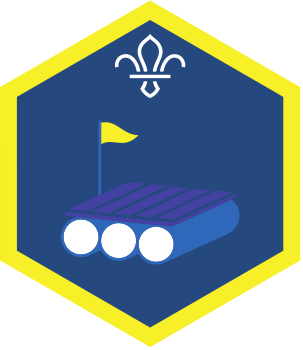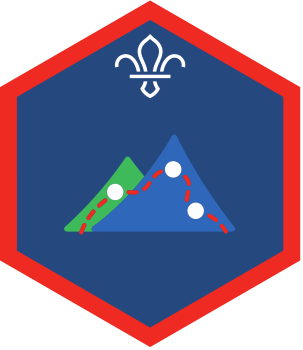
Discovery treasure hunt
You’ll need
- Pens or pencils
- Scrap paper
- Camera or phone (optional)

Feel joy, wonder, and calm when interacting with the natural world.
Before you begin
- Choose an appropriate outdoor area such as a nature reserve, woodland area, riverside, canal, or park. If you’re going to meet there (rather than at your usual meeting place), make sure parents and carers know exactly where you’ll be, and what time to drop off and collect everyone.
- You’ll probably need extra adult help for this activity.
- Create a selection of treasure hunts by writing out items to find of squares or scraps of paper. We’ve included some suggestions below, but you could get everyone involved in setting the treasures to discover.
Discover the great outdoors
- Everyone should gather at the agreed place.
- An adult should explain any specific safety arrangements for the activity.
- Everyone should split into pairs or small groups.
- The person leading the activity should give each pair a treasure hunt card and ask them to find the item written on it.
- Pairs should record the item they’ve found by remembering its description, drawing it, writing down what it looks like, or taking a picture.
- Once a pair has recorded the item, they should tell someone about the item (or show them their drawing, writing, or photo) and explain why it matches the card.
- Pairs should repeat steps four to six until the group has found all items on the treasure hunt.
You can choose any items you’d like, but try to keep them open to interpretation. You could include:
- A cloud that looks like something
- Something you’ve never seen before
- The most interesting and the most boring rock
- The most stick like stick
- Your favourite leaf
- Something mysterious
- Something that shouldn’t be here
- Something really, really important
- The best smelling thing
- Something that plays a tune
- Two things which are opposite
- Something shaped like something else
Reflection
This activity helps everyone focus on what is around them and connect with the outdoors. Everyone should tell the group about some of the items they’ve found:
- Why did people choose a certain item for a treasure hunt card?
- Were there other items they could have chosen?
- Is anyone surprised by the items the other pairs chose for the same cards?
Safety
All activities must be safely managed. You must complete a thorough risk assessment and take appropriate steps to reduce risk. Use the safety checklist to help you plan and risk assess your activity. Always get approval for the activity, and have suitable supervision and an InTouch process.
- Visits away from your meeting place
Complete a thorough risk assessment and include hazards, such as roads, woodland, plants, animals, and bodies of water (for example, rivers, ponds, lakes, and seas). You’ll probably need more adult helpers than usual. Your risk assessment should include how many adults you need. The young people to adult ratios are a minimum requirement. When you do your risk assessment, you might decide that you need more adults than the ratio specifies. Think about extra equipment that you may need to take with you, such as high visibility clothing, a first aid kit, water, and waterproofs. Throughout the activity, watch out for changes in the weather and do regular headcounts.
- Outdoor activities
You must have permission to use the location. Always check the weather forecast, and inform parents and carers of any change in venue.
Start by asking the group to find just one or two of the items, then gradually add more.
Plan a trip that will be accessible for everyone – you may need to consider how people will get to the meeting point and whether there are accessible paths, for example. Make sure you have enough adults to provide any additional support people in your group might need.
All Scout activities should be inclusive and accessible.
People can make their own versions of the treasure hunt by designing their own cards and then swap them.


